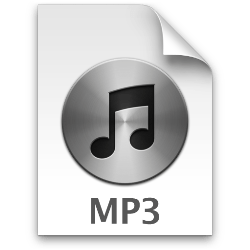Handler on Duty: Didier Stevens
Threat Level: green
Podcast Detail
Apple Updates Safari; Paypal fixes interesting CSRF; Decoding F5 Cookies; CAPTCHAS are dead and rebo
If you are not able to play the podcast using the player below: Use this direct link to the audio file: https://traffic.libsyn.com/securitypodcast/4261.mp3
My Next Class
| Application Security: Securing Web Apps, APIs, and Microservices | Orlando | Mar 29th - Apr 3rd 2026 |
| Network Monitoring and Threat Detection In-Depth | Amsterdam | Apr 20th - Apr 25th 2026 |
Apple Updates Safari; Paypal fixes interesting CSRF; Decoding F5 Cookies; CAPTCHAS are dead and reborn
Safari (OS X) Update
http://lists.apple.com/archives/security-announce/2014/Dec/msg00000.html
PayPal Vulnerable CSRF Implementation
http://yasserali.com/hacking-paypal-accounts-with-one-click/
Abusing F5 Load Balancer Cookies
http://blog.ptsecurity.com/2014/12/ddos-attack-over-load-balancer-secure.html
Google rolls outnew CAPTCHA
http://googleonlinesecurity.blogspot.com.es/2014/12/are-you-robot-introducing-no-captcha.html
Safari (OS X) Update
http://lists.apple.com/archives/security-announce/2014/Dec/msg00000.html
PayPal Vulnerable CSRF Implementation
http://yasserali.com/hacking-paypal-accounts-with-one-click/
Abusing F5 Load Balancer Cookies
http://blog.ptsecurity.com/2014/12/ddos-attack-over-load-balancer-secure.html
Google rolls outnew CAPTCHA
http://googleonlinesecurity.blogspot.com.es/2014/12/are-you-robot-introducing-no-captcha.html
Discussion
New Discussions closed for all Podcasts older than two(2) weeks
Please send your comments to our Contact Form
| Application Security: Securing Web Apps, APIs, and Microservices | Orlando | Mar 29th - Apr 3rd 2026 |
| Network Monitoring and Threat Detection In-Depth | Amsterdam | Apr 20th - Apr 25th 2026 |
| Application Security: Securing Web Apps, APIs, and Microservices | San Diego | May 11th - May 16th 2026 |
| Network Monitoring and Threat Detection In-Depth | Online | Arabian Standard Time | Jun 20th - Jun 25th 2026 |
| Network Monitoring and Threat Detection In-Depth | Riyadh | Jun 20th - Jun 25th 2026 |
| Application Security: Securing Web Apps, APIs, and Microservices | Washington | Jul 13th - Jul 18th 2026 |
| Application Security: Securing Web Apps, APIs, and Microservices | Las Vegas | Sep 21st - Sep 26th 2026 |












In just 4 minutes, manually, I was able to use Windows Snipping tool on each picture, import those pictures into Google's own image search, and use a Word Map, to discover single most common noun for each photo, then could easily correlate with the most common noun of the subject image.
This is a bit slower than simply running a captcha image through an advanced OCR... but fairly easy to write a script to take cropped screenshots of each image and run through Google's image search and then do a word correlation.
Google could try to lock down their Image Search API, limiting the number of searches per second to catch spammers, but that is easy to get around. They could try removing these images from their index, but that is make it hard to use good recognizable images.
Any attempt to obfuscate the images will result in pain for the user to recognize on mobile devices, just like captchas are getting harder.
My suggestion, is to overlap, blend, and blur borders of the images together, and analyze user input (press) coordinates on the server to determine the closest, most likely choice of the user. You have to eliminate a clean "cropping" of the image, while preserving human recognizability.